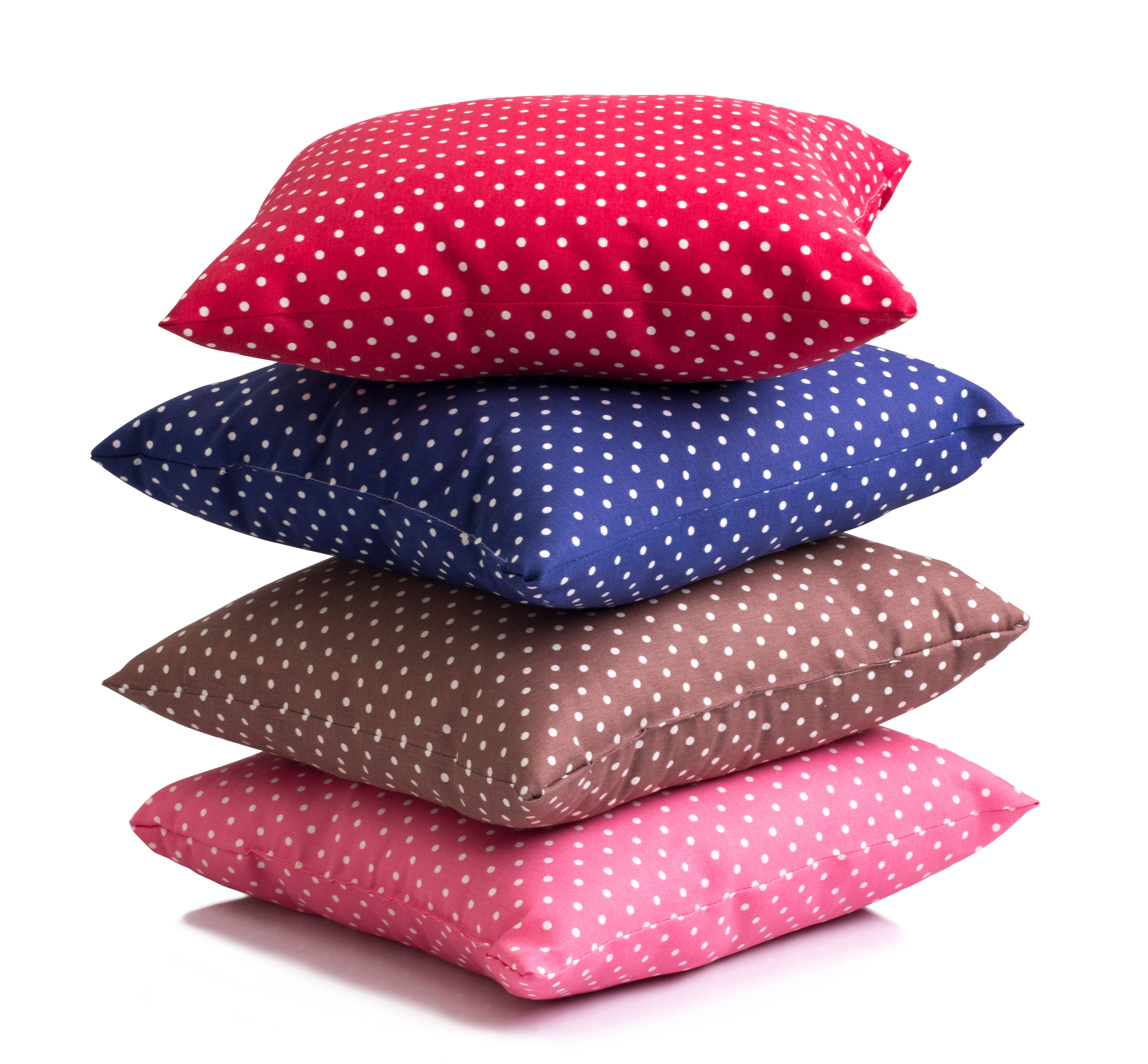Share
Polka dot pattern is typically composed of a solid colored ground speckled with large, usually evenly sized and spaced spots of a different color, or sometimes multiple colors. This iconic yet simplistic pattern has a long history of use in fashion and interior design as a playful and fun way to add interest to any modern home or outfit.
The origins of polka dots date back to medieval times in Europe, when they held a much more ominous connotation. Back then, polka dots and any similar patterns were associated with disease and poor health, likely due to the visual similarities shared with the sores caused by the plague and smallpox. Both of these diseases were extremely lethal and rampant in the medieval era, so anything resembling them - especially in a time when science was less advanced and people were highly superstitious - was viewed as a bad omen.
The namesake of polka dots didn’t come around until around the 1840s, thought to have come from the "polka" dance that was also popularized during this time. Simply because they became popular at the same time, these two burgeoning trends became forever intertwined by sharing a name. Many fashion items were referred to as “polka” at the time, such as clothing and accessories, but the name of the pattern is the only one whose name endured the decades.
Polka dots were rarely seen in fabrics prior to the Industrial Revolution due to how difficult it was to create the contrasting print by hand. In the mid 1800s, manufacturers started using the advanced capabilities of new machinery to create detailed and multicolored dye patterns, and thus the polka dot was allowed to flourish.

Since they were first popularized and earned their catchy name almost 200 years ago, polka dot fabric has been a popular choice for women’s clothing and interior design elements. Like any other pattern, it has experienced a number of spikes and dips in trendiness over the years, but has never truly gone out of style.
In the 1950s, for example, polka dots were a regular sight in casual women’s dress and have cemented themselves in history as the pattern of the decade. Thanks to pop culture perpetuating the popularity of polka dots in the ‘50s through film and movies as well, the pattern has become an icon of that time period.
The most recent revival of the polka dot trend was for a brief time circa 2010, when it took the fashion and interior design worlds by storm yet again. The early 2010s were all about loud and colorful statements that took some inspiration from the 1980s. Bright and oversized prints like polka dot and chevron were found on everything from pillows to purses, before the polka dot craze quietly faded yet again.
Since then, these bold patterns have faded to the background a bit, but, thanks to their simplicity and timelessness, are still never completely “out”. As trends tend to do, they have simply transformed with the times to suit what is popular now. Instead of the flashy neon and white polka dot fabrics like we saw in the 2010s, polka dots in the 2020s find a way to blend in rather than stand out; they make subtle statements rather than bold ones.
Our Waters Throw Pillow Cover (pictured below) makes a great example of this by maintaining that bright and fun contrast with its crimson and white coloring, but the ikat detailing to the dots gives it a little more personality and texture than a crisp, plain polka dot. Our Gleason Pillow Cover breaks the traditional polka dot even more by incorporating a bit of irregularity and splatter effect to the dots - a fun way to make polka dots less predictable and add some edge. Lastly, the Athol Pillow Cover modernizes the quintessential black and white polka dot pillow with oversized, widely spaced dots.



1 comment
I publish a free complimentary magazine in Midland Texas and would like permission to use some of your design editorial in my magazine. I would like to get permission to do this.
Looking forward to hearing from you. I bought some pillow fillers from you today off your website and really enjoyed reading all the design info on your website.
please note that I would credit (Cloth& Stitch) when using your material. Looking forward to hearing from you.,
Beverly Philbeck
Midland Lifestyles Magazine
2517 Goddard Drive
Midland, TX 79705
bevyd@suddenlink.net